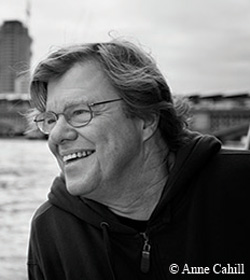Joe McNally’s Life in the Field
Posted in Adult Education, Photography, Programs and Events on April 28 2015, by Plant Talk
 His career spans more than 30 years, and his portfolio includes photographs published in some of the world’s largest publications. He shot the first all-digital cover story for National Geographic, “The Future of Flying,” commemorating the centennial of the Wright Brothers’ flight at Kitty Hawk. As the dust was settling after 9/11, he used what was the world’s only life-sized instant Polaroid camera to create a project called Faces of Ground Zero, which became a book and generated approximately $2 million for the relief effort.
His career spans more than 30 years, and his portfolio includes photographs published in some of the world’s largest publications. He shot the first all-digital cover story for National Geographic, “The Future of Flying,” commemorating the centennial of the Wright Brothers’ flight at Kitty Hawk. As the dust was settling after 9/11, he used what was the world’s only life-sized instant Polaroid camera to create a project called Faces of Ground Zero, which became a book and generated approximately $2 million for the relief effort.
And now, he’s coming to the Garden to deliver a special lecture, “The Nature of Photography: Life in the Field,” on Wednesday, April 29.
He’s internationally acclaimed photographer Joe McNally, known for his ability to produce technically and logistically complex photographs with the expert use of color and light, capturing emotion, and telling stories in his photos.
Garden photography instructor Jeffrey Falk said McNally’s work as a field photographer displays untiring skill and drive to capture amazing moments.
“His photo shoots take place within a very confined schedule—there are no second chances,” Falk said. “McNally’s images are much more than photographs. They’re true works of art that always tell a story.”
Just looking at his photos in his portfolio, you begin to understand who and what he’s seeing from behind his lens. He perfectly captures New York City in a series of 15 photos on his online portfolio, including the intensity of driving a fire engine to an emergency, the grit of an older man smoking a cigarette on a stoop in the winter, and the dynamic light and color of The Big Apple as seen from inside an iconic yellow cab.
His dance photos capture the grace and movement of a ballerina, but don’t ignore the pain, effort, and struggle that goes into learning to perfectly pirouette and plié. Images of athletes convey strength and power, and tell the stories of the journeys they took to get there, with or without a sweaty brow or the flush of aerobic activity.
His war-aftermath photo project for LIFE, “The Panorama of War,” won the first Alfred Eisenstaedt Award in the category for Journalistic Impact. He shot photos without appointments, unplanned, in hot-zones including Rwanda and Chechnya, learning to survive and protect his camera equipment as he went. The series is raw, honest, and sympathetic to the human condition.
Each photo McNally takes is carefully composed and eye-catching, playing up the natural light, with well-placed lighting enhancements for dramatic shots. Also notable is his expert use of perspective. Your eye knows exactly where to look, even in images with busy backgrounds.
“He has a total understanding and mastery of light and composition,” Falk said. “When he utilizes supplementary lighting, there is no evidence of it, except perfect illumination of the subject.”
In Wednesday’s lecture at the Garden at 6:30 p.m. in Ross Hall, McNally will draw upon his extensive experience and portfolio to help you, too, bring emotional impact to your photographs—focusing on composition, lighting, and the inherent drama of the shot. Don’t miss it!

